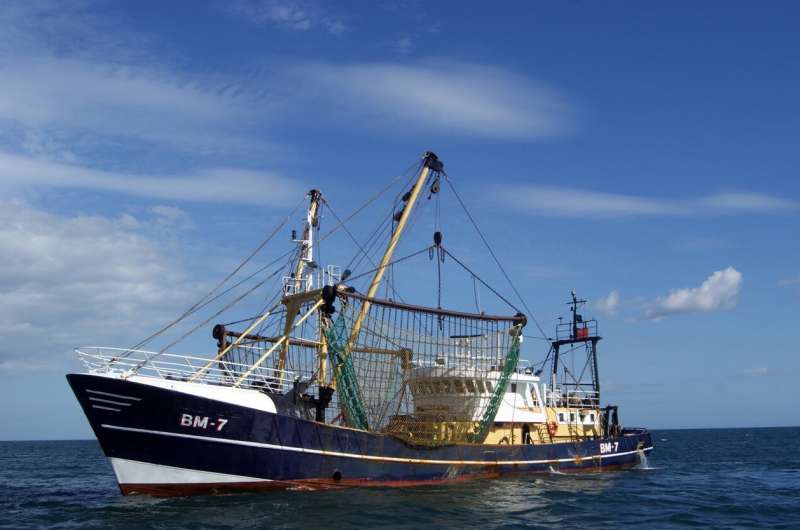This article has been reviewed according to Science X's editorial process and policies. Editors have highlighted the following attributes while ensuring the content's credibility:
fact-checked
peer-reviewed publication
trusted source
proofread
Sperm and northern bottlenose whales observed swimming behind deep-sea trawler net to feed on escaping fish

Sperm and northern bottlenose whales were frequently observed following a trawler off the coast of Newfoundland to feed on fish escaping from the net as it was hauled in, according to a study published August 23, 2023 in the open-access journal PLOS ONE by Usua Oyarbide from Plentzia Marine Station–Univ Basque Country, Spain, and colleagues.
In this study, the authors looked at how cetaceans interacted with a deep-sea trawler fishing in the western North Atlantic off the coast of Newfoundland in 2007. Oyarbide tracked whale encounters over 50 days between July 20 and September 13, 2007, while onboard the trawler as a North Atlantic Fisheries Organization observer.
Sperm whales (Physeter macrocephalus) were seen in 129 encounters and northern bottlenose whales (Hyperoodon ampullatus) in 86 encounters directly interacting with the ship in areas where the trawler was fishing for Greenland halibut (Reinhardtius hippoglossoides).
The whales weren't observed when the trawler was fishing redfish (Sebastes sp.) thorny skate (Raja sp.), or any other fish species the trawler took, suggesting halibut was the fish of choice for both species.
The longest sighting of a sperm whale (one hour and 20 minutes of continuous observation) occurred while the trawling net was being towed across the ocean bed to catch fish—in general, during towing, sperm whales (but not northern bottlenose whales) were often seen swimming parallel to the ship and surfacing or breaching.
When the full fishing net was hauled in, both sperm and northern bottlenose whales were sighted swimming behind the net and/or surface feeding on escaped fish, with the majority of whale observations happening during hauling. Five of the ten sperm whales who were observed near the ship were spotted in repeat encounters, traveling up to 235 km away from where they were originally observed as the ship fished new areas for halibut.
While other studies at Greenland halibut fisheries have described sperm and northern bottlenose whales feeding primarily on offal and discards, this was not observed on this specific vessel, where both whale species primarily fed on live (albeit dazed) halibut escaping from the net during hauling—suggesting that perhaps differences in fishing practices across regions or over time may change whale behavior when associating with ships.
The authors note that more research on interactions between whales and fisheries in this area are needed, as the implications and possible risks (e.g., entanglement or fisher retaliation) for whales are unknown.
The authors add, "Our research provides new insights into the behavior of sperm and northern bottlenose whales around a commercial fishing vessel targeting Greenland halibut."
More information: Sperm and northern bottlenose whale interactions with deep-water trawlers in the western North Atlantic, PLoS ONE (2023). DOI: 10.1371/journal.pone.0289626
Journal information: PLoS ONE
Provided by Public Library of Science
















